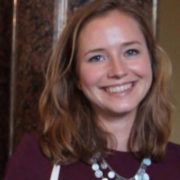How to increase student mobility in a one-year master programme?
Through bi-weekly posts, MA staff participating in the USO-project on internationalisation will share concrete teaching tools and activities through which we aim to enhance ‘tailor-made’ internationalisation.
This week: Mobility lessons from MA Spatial Planning.
Bridging planning practice and academia is one of the essential aspects of the master programme Spatial Planning in Utrecht. The first half of the master programme consists mainly of courses , whereas the second half is dedicated to writing the master thesis. In the first half year of the curriculum, the international perspective is essential to understand the Dutch planning system properly, whereas planning issues don’t cease at a land border. Examples of Dutch planning practice can be complemented with international planning practices to aim for an added value in the planning courses. This international point of view is important for students to improve the quality of the thesis in the second half, which most students link with an internship. Within the USO Internationalisation project options for stimulating student mobility and internationalisation were explored.
Whereas Erasmus Exchange programmes, where students would have the possibility to go abroad for a semester, are very difficult to realise in practice in one-year programmes,– in particular with the internationally incompatible time tables, the pilot study on internationalisation in the Spatial Planning programme explored other mobility options. The internationalisation strategy that has been developed and that is tested in practice at the moment rests on three pillars:
- Facilitate international students before application. The goal is to attract more foreign students to create an international classroom. This implies tailored promotion of the programme and international-oriented promotional activities. As a start, the website has been carefully revised to match the needs of international students.
- Use international mobility elements in courses. This implies not necessarily to go abroad with students, but could also be realised by inviting guest speakers from abroad. Likewise we wanted to make use of student excursions from abroad which visited the Netherlands and create interactions with our students . For example, a student group from Vienna collaborates with our students in a planning course. In addition, short-term excursions to neighbouring countries are organised to embed international perspectives in planning practice and teaching (i.e. a mini field trip to the Ruhr).
- Facilitate international internships. Hitherto, Dutch students found their thesis internships in the Netherlands. However, the increasing amount of international students who are applying for the Spatial Planning master have problems with finding a fitting internship because of language barriers. Therefore, to increase the international added value of internships, international internships are essential for both Dutch and international students. Therefore we are encouraging and facilitating international internships. This also involves less common forms of internships (i.e. linking with ongoing research projects or with networks of docents). Other options explored are collaborations with international planning associations (i.e. AESOP).
This threefold strategy shall foster international mobility in the Spatial Planning programme. The missing possibility of Erasmus has thus been used as an incentive to find innovative solutions within the existing structure.
 5 April 2017
5 April 2017
If you want to comment, please login on the left side of the page with your UU account..


